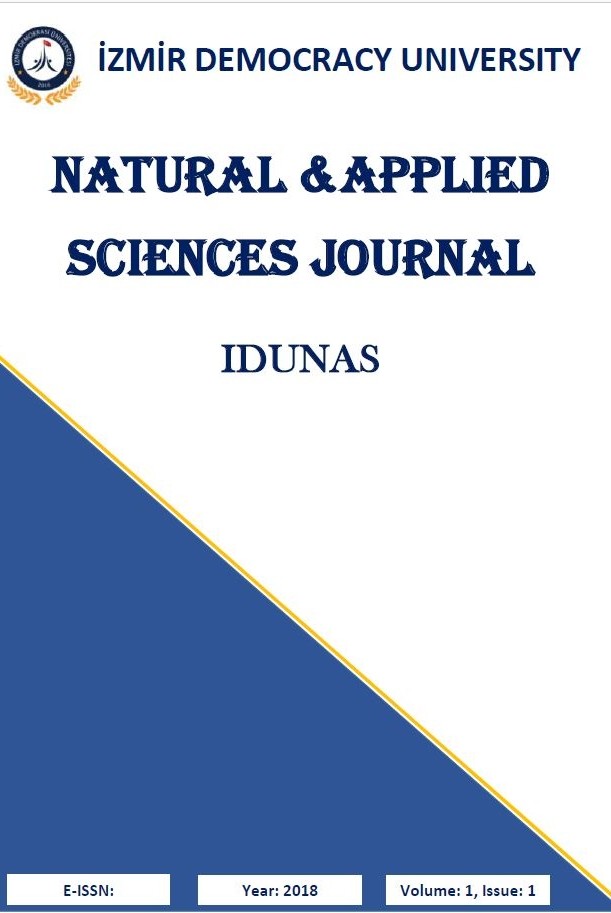Hiperspektral Görüntüleme ile Kırmızı Kan Hücresi Analizi
Hiperspektral görüntüleme sistemi yüzlerce spektral bandı kullanma avantajına sahip; nesneleri bulma, tanıma, sınıflandırma için görüntü içerisindeki her bir piksele ait spekral imza olarak isimlendirilen spektral bilgiyi elde etmeyi amaçlayan yeni bir teknolojidir. Daha çok uzaktan algılama alanında çalışılıyor olsa da son yıllarda sağlık alanında da üzerinde çalışılmakta olan konular arasındadır. Hiperspektral görüntüleme sistemi tıbbi uygulamalar için yeni bir görüntüleme modelidir ve non-invaziv hastalık tanısı, cerrahi kılavuzluk gibi alanlarda büyük potansiyel oluşturmaktadır. Bu çalışmada, bir hiperspektral görüntüleme sistemi inşa edildi. Geliştirilen sistem kullanılarak, kan örneğinin mikroskopik görüntüleri alındı. Kan örneği içerisinde yer alan kırmızı kan hücreleri farklı dalga boylarında incelenerek görüntü analizi yapıldı. Bu işlem sırasında öncelikle kırmızı kan hücrelerinin(eritrosit) yerleri tespit edildi. Sonrasında her bir eritrosit için sitoplazma, hücre kenarı, ekstraselüler sıvı ve hücre merkezinde yer alan soluk renkli alanın tespiti yapıldı.
Anahtar Kelimeler:
Hiperspektral görüntüleme, kırmızı kan hücresi, eritrosit, sınıflandırma
Red Blood Cell Analysis by Hyperspectral Imaging
Hyperspectral imaging is a new technology that aims to use the spectral information of each pixel in different spectral bands to find, identify and classify objects in an image. The hyperspectral imaging system, which is frequently used in the field of remote sensing, is becoming a new imaging model for medical applications and non-invasive disease diagnosis. In this study, a hyperspectral microscope system capable of capturing images of biological samples at different range of spectral wavelengths was developed. With this system, red blood cells in the blood sample were analyzed at various wavelengths and image classification was performed to determine the locations of red blood cells (erythrocytes). Subsequently, the detection of cytoplasm, cell edge, extracellular fluid, and pale area in the cell center of each erythrocyte was successfully performed.
Keywords:
Hyperspectral imaging, red blood cell, classification, segmentation,
___
- Özçelik, M. F., & Bilge, H. Ş. (2010, April). The determination of white blood cell borders with using of logical and morphological operations in microscopic blood images. In Signal Processing and Communications Applications Conference (SIU), 2010 IEEE 18th (pp. 688-691). IEEE.
- Altın, N., Koray, M., Meşeli, S. E., & Tanyeri, H. (2016). Oral Manifestations of Anemia: Review. Clinical and Experimental Health Sciences, 6(2), 86-92.[3] AYDOĞDU, İ. (2012). Blood Cells in Disrorders and Health. Turkiye Klinikleri Journal of Hematology Special Topics, 5(4), 16-27.
- Sharif, J. M., Miswan, M. F., Ngadi, M. A., Salam, M. S. H., & bin Abdul Jamil, M. M. (2012, February). Red blood cell segmentation using masking and watershed algorithm: A preliminary study. In Biomedical Engineering (ICoBE), 2012 International Conference on (pp. 258-262). IEEE.
- Chourasiya, S., & Rani, G. U. (2014). Automatic red blood cell counting using watershed segmentation. Hemoglobin, 14, 17.
- Wang, R., MacCane, B., & Fang, B. (2010, December). RBC image segmentation based on shape reconstruction and multi-scale surface fitting. In Information Science and Engineering (ISISE), 2010 International Symposium on (pp. 586-589). IEEE.
- Guan, Y., Li, Q., Liu, H., Zhu, Z., & Wang, Y. (2012). Pathological leucocyte segmentation algorithm based on hyperspectral imaging technique. Optical Engineering, 51(5), 053202.
- Wu, J., Zeng, P., Zhou, Y., & Olivier, C. (2006, November). A novel color image segmentation method and its application to white blood cell image analysis. In Signal Processing, 2006 8th International Conference on (Vol. 2). IEEE.
- Liao, Q., & Deng, Y. (2002). An accurate segmentation method for white blood cell images. In Biomedical Imaging, 2002. Proceedings. 2002 IEEE International Symposium on (pp. 245-248). IEEE.
- Yi, F., Chongxun, Z., Chen, P., & Li, L. (2006, January). White blood cell image segmentation using on-line trained neural network. In Engineering in Medicine and Biology Society, 2005. IEEE-EMBS 2005. 27th Annual International Conference of the (pp. 6476-6479). IEEE.
- Shippert, P. (2003). Introduction to hyperspectral image analysis. Online Journal of Space Communication, 3.
- Panasyuk, S. V., Yang, S., Faller, D. V., Ngo, D., Lew, R. A., Freeman, J. E., & Rogers, A. E. (2007). Medical hyperspectral imaging to facilitate residual tumor identification during surgery. Cancer biology & therapy, 6(3), 439-446.
- Kosanke, T. H., Perry, S. E., & Lopez, R. (2017). High-Resolution Hyperspectral Imaging Technology: Implications for Thin-Bedded Reservoir Characterization.
- Khaodhiar, L., Dinh, T., Schomacker, K. T., Panasyuk, S. V., Freeman, J. E., Lew, R., ... & Lyons, T. E. (2007). The use of medical hyperspectral technology to evaluate microcirculatory changes in diabetic foot ulcers and to predict clinical outcomes. Diabetes care, 30(4), 903-910.
- Sezer, O. G., Erçil, A., & Keskinoz, M. (2005, May). Independent component based 3D object recognition using support vector machines. In Signal Processing and Communications Applications Conference, 2005. Proceedings of the IEEE 13th (pp. 99-102). IEEE.
- Mercier, G., & Lennon, M. (2003, July). Support vector machines for hyperspectral image classification with spectral-based kernels. In Geoscience and Remote Sensing Symposium, 2003. IGARSS'03. Proceedings. 2003 IEEE International (Vol. 1, pp. 288-290). IEEE.
- Turgut, B. (2010). How Important is Anemia for the Clinician?. Balkan Medical Journal, 2010(1).
- Mc Millian,Chaisson.(2011).Astronomy Today. Chapter 4. 7th Edition. Pearson Edication
- ISSN: 2645-9000
- Başlangıç: 2018
- Yayıncı: İzmir Demokrasi Üniversitesi
Sayıdaki Diğer Makaleler
Hiperspektral Görüntüleme ile Kırmızı Kan Hücresi Analizi
Hüseyin KURTULDU, Aynur Didem OKTAN, Hatice CANDAN, Beste Sahra CİHANGİROĞLU
Bioremediation of wastewaters from local textile industries
Sabit Manyetik Alanların Programlanabilir Şantlar Üzerine Etkisi
Hüseyin KURTULDU, Büşra ÖZGEDE
Comparison Of Physical And Physiological Parameters Of Children Skier And Volleyball Players
